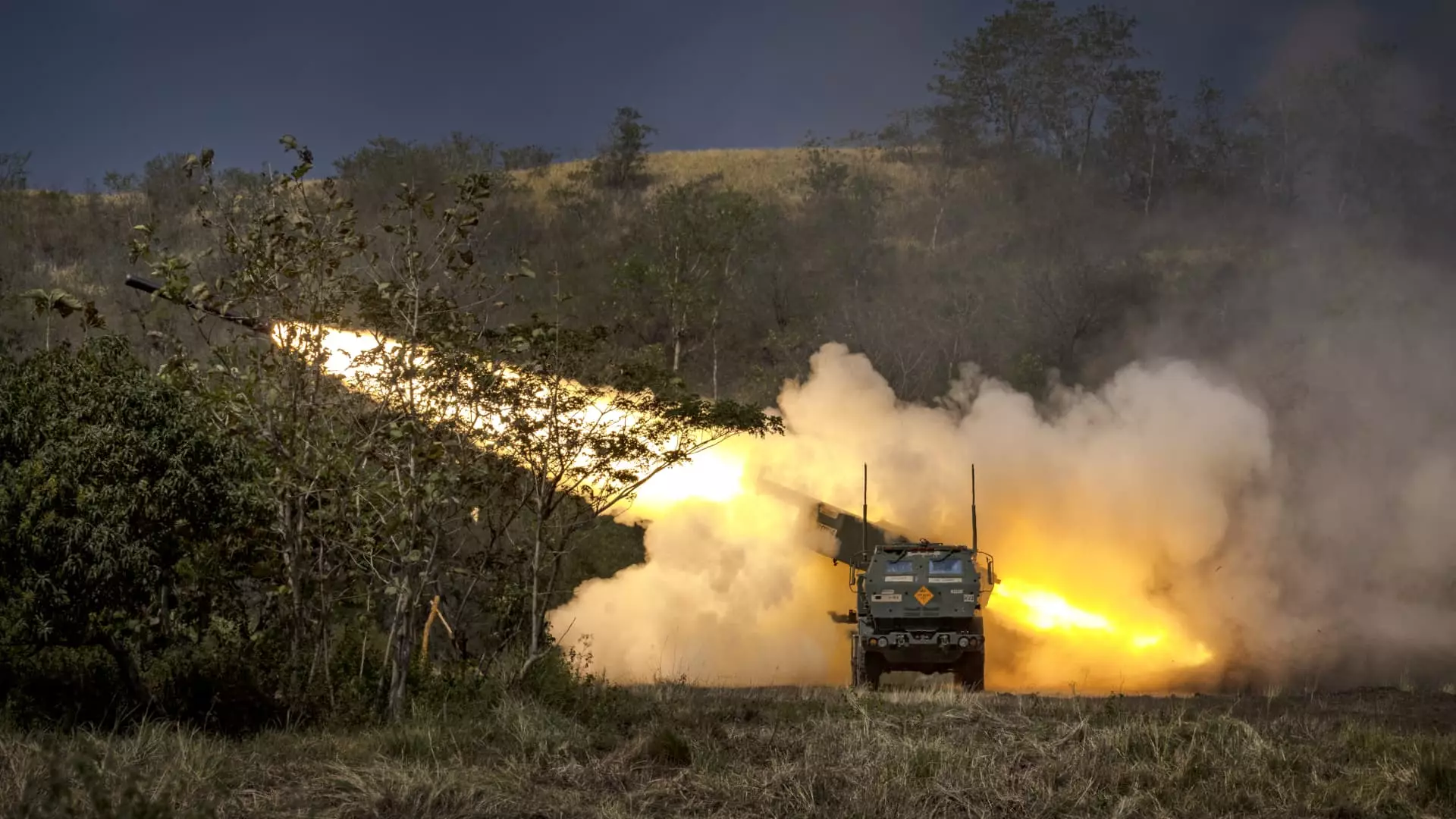In recent years, the geopolitical landscape of the South China Sea has become increasingly contentious, drawing attention from major global powers, primarily the United States and China. In this backdrop, the decision to deploy the Typhon mid-range missile system in the Philippines underscores a pivotal strategy embraced by the U.S. amidst rising tensions and persistent confrontations in the region. This missile system, capable of launching advanced weapons like the Tomahawk and SM-6 missiles, has been positioned strategically to counter potential aggression from China, especially relating to Taiwan, whose security is intertwined with regional stability.
The Typhon’s arrival was marked during joint military exercises in the Philippines earlier this year, revealing a clear commitment from the U.S. to bolster defense cooperation with its ally. Despite Chinese demands for the system’s withdrawal, the U.S. has no immediate plans to pull it back. This indicates a long-term strategy rather than a transient military gesture, highlighting the growing complexity of U.S. foreign relations in Asia and the inherent risks involved.
China’s Response and Regional Implications
Naturally, the deployment has drawn sharp criticism from China, which views this as an escalation that threatens its national security. The Chinese foreign ministry has articulated concerns that the Typhon system could exacerbate geopolitical tensions and trigger an arms race within the Asia-Pacific region. Such reactions are indicative of China’s broader strategy to assert its claims over the South China Sea and maintain a regional balance that favors its influence.
Moreover, the presence of advanced U.S. weaponry in the Philippines fosters a climate of distrust among neighboring countries, as evidenced by both Beijing’s reaction and the statements from Russian officials. The strategic dynamics are further complicated by China’s extensive militarization of contested islands in the South China Sea, which poses an ongoing challenge to the U.S. and its allies, including the Philippines.
From the perspective of Philippine authorities, retaining the Typhon system plays a crucial role in national defense and regional deterrence. Officials have suggested that this military asset is not merely a temporary deployment but is instead part of broader contingency planning in anticipation of potential aggressions from China. This sentiment is echoed in the remarks of Philippine military leaders, who have emphasized the importance of ongoing training with the missile system.
Colonel Louie Dema-ala’s statement that the duration of the Typhon’s stay will ultimately be determined by U.S. Army Pacific underscores the intertwined nature of Philippine defense strategy with U.S. military planning. The Philippines finds itself in a precarious position, balancing the need for security against an aggressive regional power while also managing its relations with the United States, which is both a crucial ally and a source of tension with China.
The future of U.S.-Philippine relations appears tightly linked to the effectiveness of the Typhon system as both a deterrent and a tactical asset in regional conflicts. As the U.S. military continues to expand its presence and capabilities in Asia, the question arises: how effective will these measures be in countering Chinese expansionism? The ongoing training and collaborative exercises signify a commitment to interoperability between the forces, ensuring that when tensions do surface, the Philippine military can effectively integrate U.S. technology and support.
Moreover, U.S. intentions to expand its missile arsenal in the Indo-Pacific further hint at an escalation of military capabilities designed to counter balance China’s substantial advancements in the region. Washington’s strategic posture seems to be evolving from a reactive framework to a more proactive approach aimed at deterring any aggressive maneuvers from state actors like China.
In summation, the deployment of the Typhon missile system in the Philippines is not just a military maneuver, but a reflection of broader geopolitical currents that define the Asia-Pacific region. While the U.S. seeks to bolster its military alliance with the Philippines through enhanced defense capabilities, the mid-range missile system also serves as a bellwether of escalating tensions in the South China Sea. Navigating this complex landscape will require deft diplomatic and military strategies by the Philippines to maintain sovereignty while fostering a cooperative defense posture with the United States. What remains to be seen is whether such maneuvers will yield the desired deterrence or contribute to a more precarious security environment in an already volatile region.


Leave a Reply